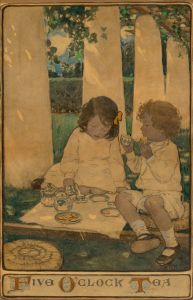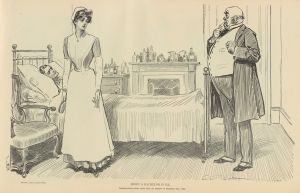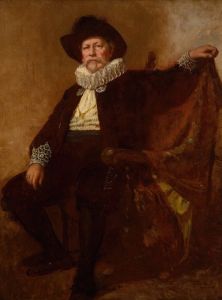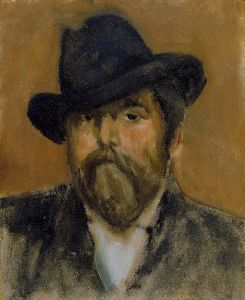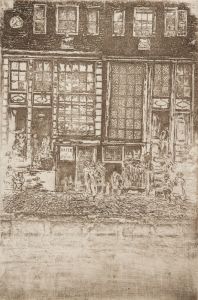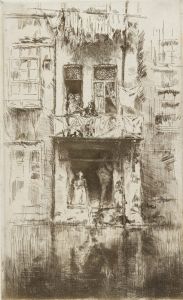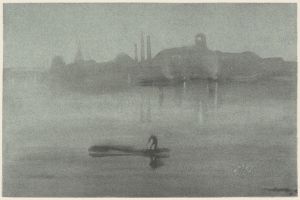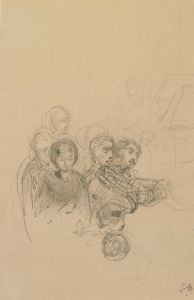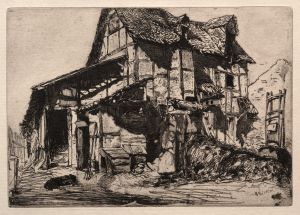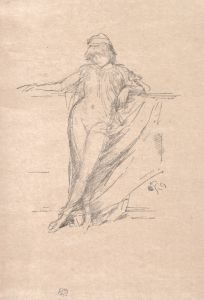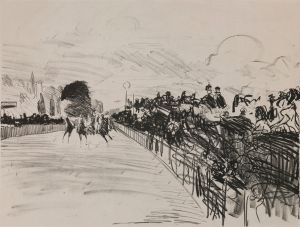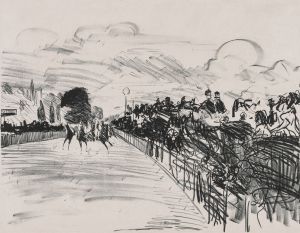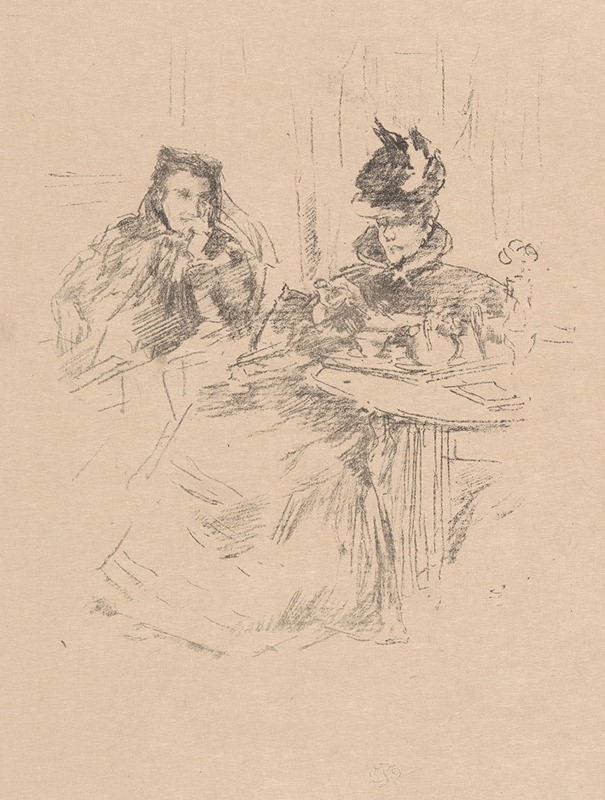
Afternoon Tea
A hand-painted replica of James Abbott McNeill Whistler’s masterpiece Afternoon Tea, meticulously crafted by professional artists to capture the true essence of the original. Each piece is created with museum-quality canvas and rare mineral pigments, carefully painted by experienced artists with delicate brushstrokes and rich, layered colors to perfectly recreate the texture of the original artwork. Unlike machine-printed reproductions, this hand-painted version brings the painting to life, infused with the artist’s emotions and skill in every stroke. Whether for personal collection or home decoration, it instantly elevates the artistic atmosphere of any space.
"Afternoon Tea" is a painting by the American-born, British-based artist James Abbott McNeill Whistler, created in the late 19th century. Whistler, known for his innovative style and contribution to the Aesthetic Movement, often focused on the harmony of color and form in his works, and "Afternoon Tea" is no exception.
The painting features a serene domestic scene, capturing a moment of leisure and refinement associated with the British tradition of afternoon tea. Whistler's interest in the subtleties of light and shadow is evident in the way he renders the figures and their surroundings. The composition is marked by a delicate balance and a restrained palette, typical of Whistler's approach to art, which often emphasized mood and atmosphere over detailed narrative.
Whistler's technique in "Afternoon Tea" reflects his mastery of tonal harmony, a concept he famously advocated for in his art. He often used a limited color scheme to create a sense of unity and tranquility, drawing the viewer's attention to the overall composition rather than individual elements. This approach aligns with his belief in "art for art's sake," where the aesthetic experience is prioritized over representational accuracy or storytelling.
The painting is also notable for its depiction of contemporary life, offering a glimpse into the social customs of the time. The ritual of afternoon tea became popular in Britain during the 19th century, symbolizing a moment of relaxation and social interaction. Whistler's portrayal of this scene reflects his interest in capturing the essence of modern life, a theme that recurs throughout his body of work.
James Abbott McNeill Whistler was an influential figure in the art world, known for his distinctive style and his role in the development of modern art. Born in Lowell, Massachusetts, in 1834, he spent much of his career in Europe, particularly in London and Paris. Whistler's work was often characterized by its subtlety and elegance, and he was a key proponent of the Aesthetic Movement, which emphasized beauty and visual pleasure in art.
Throughout his career, Whistler produced a diverse range of works, including portraits, landscapes, and etchings. His most famous painting, "Arrangement in Grey and Black No. 1," commonly known as "Whistler's Mother," exemplifies his focus on composition and tonal harmony. Like "Afternoon Tea," it reflects his commitment to creating art that transcends mere representation.
"Afternoon Tea" is part of Whistler's broader exploration of domestic and social themes, capturing the quiet elegance of everyday life. While specific details about the painting's creation and provenance may be limited, it remains an important example of Whistler's artistic philosophy and his contribution to the evolution of modern art. Through works like "Afternoon Tea," Whistler left a lasting legacy, influencing subsequent generations of artists and shaping the course of art history.





